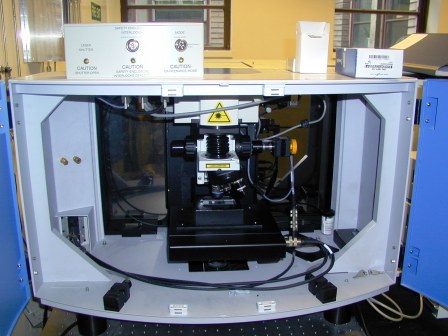Raman Spectroscopy
Raman Spectroscopy is a non-destructive chemical analysis technique which provides detailed information about chemical structure, phase and polymorphy, crystallinity and molecular interactions. It is based upon the interaction of light with the chemical bonds within a material.
Typical examples of where Raman is used today include:
- Art and archaeology – characterisation of pigments, ceramics and gemstones
- Carbon materials – structure and purity of nanotubes, defect/disorder characterisation
- Chemistry – structure, purity, and reaction monitoring
- Geology – mineral identification and distribution, fluid inclusions and phase transitions
- Life sciences – single cells and tissue, drug interactions, disease diagnosis
- Pharmaceutics – content uniformity and component distribution
- Semiconductors – purity, alloy composition, intrinsic stress/strain
The departmental Raman is situated in room A4-23. It is a LabRAM HR system, manufactured by Horiba Jobin Yvon and is equipped with the following lasers:
Ventus 532 laser system, 100mW, 532nm
Helium Cadmium IK3201R-F, 20mW, 325nm
It uses a Synapse CCD detection system, and has the following objectives:
40x for UV; 10x, 50x and 100x for visible
- A Linkam TS 1000 High Temperature Stage is also available. Gas options include an Oxygen mix, Hydrogen mix, Argon and Nitrogen

For those requiring use of the Raman, contact should be made through Mr Andrew Monaghan.

